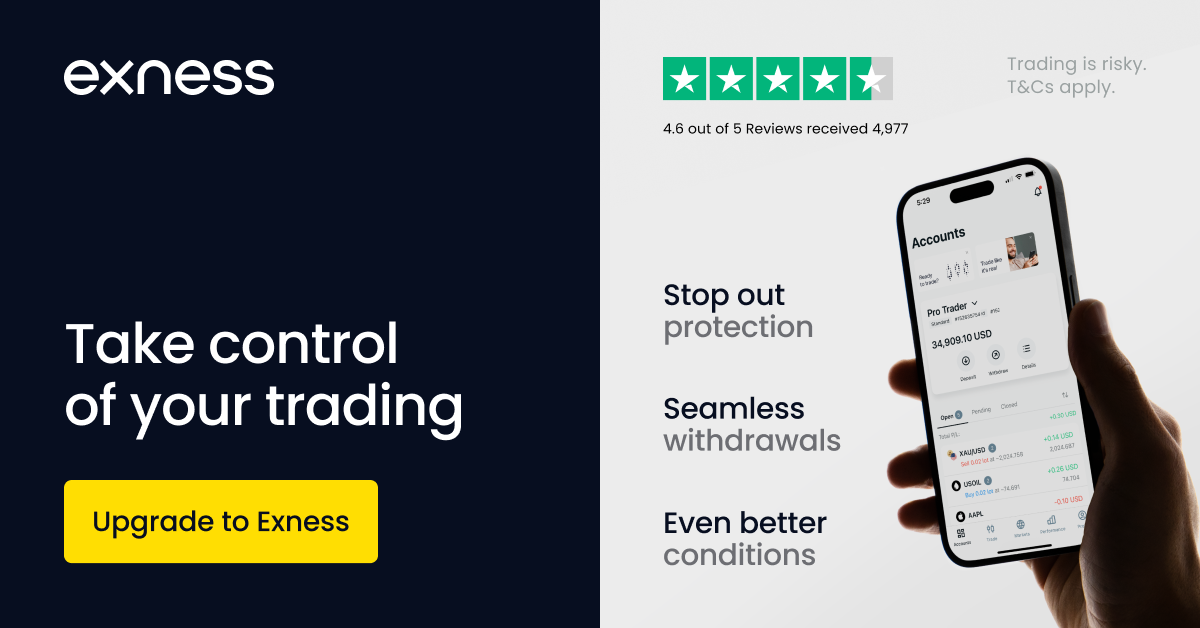
4 minute read
Exness Margin Level and Leverage: How They Relate
Understanding how margin level and leverage work together is essential for anyone trading with Exness. These two elements form the backbone of risk management and capital efficiency in Forex and CFD trading. Whether you're a beginner or an experienced trader, knowing how Exness margin level and leverage interact can help you optimize your trading strategies and avoid costly mistakes.
👉 Ready to take control of your trading with advanced tools and flexibility?Open your Exness account now

📌 What Is Leverage in Exness?
Leverage allows you to control a larger position in the market with a smaller amount of capital. For example, a leverage of 1:100 means that for every $1 of your money, you can control $100 in the market.
Exness offers flexible leverage, even up to unlimited leverage under certain conditions, giving traders significant buying power.
Benefits of Leverage:
Amplifies your potential profits
Requires lower initial capital
Allows for better diversification across assets
⚠️ However, higher leverage also increases potential losses, making margin level monitoring crucial.
📊 What Is Margin Level in Exness?
Margin level is the ratio of your equity to the used margin, shown as a percentage:
Margin Level (%) = (Equity / Used Margin) × 100
In Exness, margin level is vital for determining when margin calls and stop-outs occur.When your margin level hits certain thresholds, your open positions may be at risk of being closed automatically.
📱 Stay ahead of margin calls with Exness’s real-time risk alerts and trading dashboard:Explore Exness tools here

🔄 How Margin Level and Leverage Are Connected
Here’s how they relate:
Higher Leverage = Lower Required MarginWhen you use higher leverage, you need less margin to open a position. This can increase your margin level initially because you're using less of your equity.
Lower Leverage = Higher Required MarginWith lower leverage, you need more capital to open the same trade size, which means higher margin usage and potentially lower margin level.
Floating Losses Impact Margin LevelAs your trade incurs floating losses, your equity decreases, which lowers the margin level—regardless of leverage.
✅ This dynamic is why choosing the right leverage and maintaining your margin level go hand-in-hand.
⚙️ Practical Example
Suppose you have $1,000 in your account and use 1:100 leverage:
You open a position worth $50,000
Required margin = $500 (1% of $50,000)
If your equity drops to $500 due to losses:
Margin Level = ($500 / $500) × 100 = 100%
At this point, you are at risk of a margin call, and any further losses could trigger a stop-out.
💡 TIP: Always monitor your floating profits/losses, especially when using high leverage.
🛡️ How Exness Helps You Manage Margin and Leverage
Exness provides several features to help traders control margin and leverage:
Adjustable leverage settings for each account type
Real-time margin level indicators on MT4/MT5
Stop-out protection systems and negative balance protection
📉 Want to test different leverage settings risk-free?Try with a free Exness demo account
✅ Best Practices for Managing Margin and Leverage
Start with moderate leverage (e.g., 1:100–1:200)
Use stop-loss orders on every trade
Monitor your margin level daily
Never trade your entire equity
Keep a buffer of free margin for market volatility
Pro traders often balance leverage and risk carefully to maximize profitability while protecting their capital.
🧠 Final Thoughts
The relationship between Exness margin level and leverage is crucial in determining your trading capacity, risk exposure, and account sustainability. Understanding how these two factors interact allows you to trade more confidently and safely, especially during volatile market conditions.
🚀 Want to unlock full control over your trades with powerful margin tools and customizable leverage?Join Exness today and start trading smarter
See more:
How to create an account with EXNESS
Tips for Managing Spread in Exness
How to Minimize Spread Costs in Exness?










